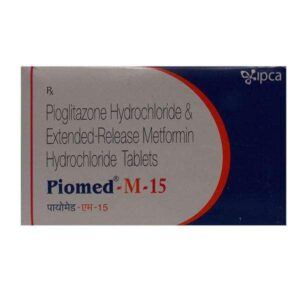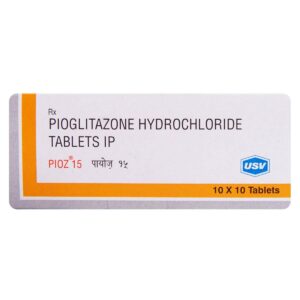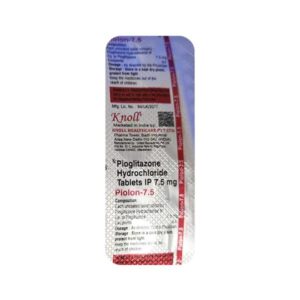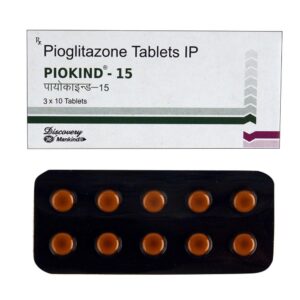PIOGLITAZONE
PIOGLITAZONE: Pioglitazone is an oral medication that belongs to the class of drugs known as thiazolidinediones. It is primarily used for the management of Type 2 diabetes mellitus.
The mechanism of action of pioglitazone involves improving insulin sensitivity and decreasing insulin resistance. It works by activating the peroxisome proliferator-activated receptor-gamma (PPAR-gamma) in target tissues such as adipose tissue, skeletal muscle, and liver. Activation of PPAR-gamma leads to enhanced glucose utilization and storage, reduced hepatic glucose output, and increased insulin sensitivity. This results in better glycemic control by lowering blood glucose levels.
The usual starting dose of pioglitazone is 15-30 milligrams per day, taken orally once daily. It can be taken with or without food. The dose can be titrated up to a maximum of 45 milligrams per day, depending on the individual’s response and tolerability.
Common side effects of pioglitazone may include weight gain, edema (fluid retention), headache, muscle pain, and upper respiratory tract infections. It may also increase the risk of developing heart failure, particularly in patients with underlying cardiovascular conditions. Rare but serious side effects include liver dysfunction and an increased risk of bladder cancer.
Due to the potential risks associated with pioglitazone, it is important for patients to be regularly monitored for signs of heart failure and liver function abnormalities. It is contraindicated in patients with active bladder cancer or a history of bladder cancer. The benefits and risks of pioglitazone should be carefully evaluated before initiating treatment, especially in patients with known risk factors for bladder cancer or heart failure.




